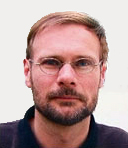Improving video compression
Janusz Konrad has discovered a way to store more video on devices like cell phones, and at higher quality.

The European Association for Signal and Image Processing (EURASIP) has awarded Janusz Konrad, an associate professor of Electrical and Computer Engineering in the College of Engineering, the EURASIP Image Communication Journal Best Paper Award for 2004-2005. Founded in 1978, EURASIP strives to improve communication between groups and individuals in the field of signal processing and to exchange information worldwide. The Best Paper Award is granted every two years, but only if an outstanding paper is found.
Konrad’s paper, “Motion Analysis in 3D DCT Domain and its Application to Video Coding” which is co-authored with his former student, Dr. Nikola Bozinovic, deals with the compression of video sequences (moving images). “Today, all popular video compression formats, such as MPEG-2 used in DVDs, MPEG-4 used in cell phones and AVC that is going to dominate consumer electronics market in a few years, use the so-called 2-D DCT (two-dimensional discrete cosine transform) in order to eliminate spatial image redundancy,” says Konrad. “We have developed a new video compression scheme that is based on 3-D DCT thus eliminating video redundancy exclusively in the transform domain.”
What this means for the average person, is that you could store more video on devices such as cell phones and PDAs, and with the same picture quality as a DVD. Also, because this method of compression is more efficient, it could extend the battery life of these devices.
Konrad and Bozinovic will receive their award, and a cash prize of €1,000, at the annual EURASIP convention in Florence, Italy, in September.